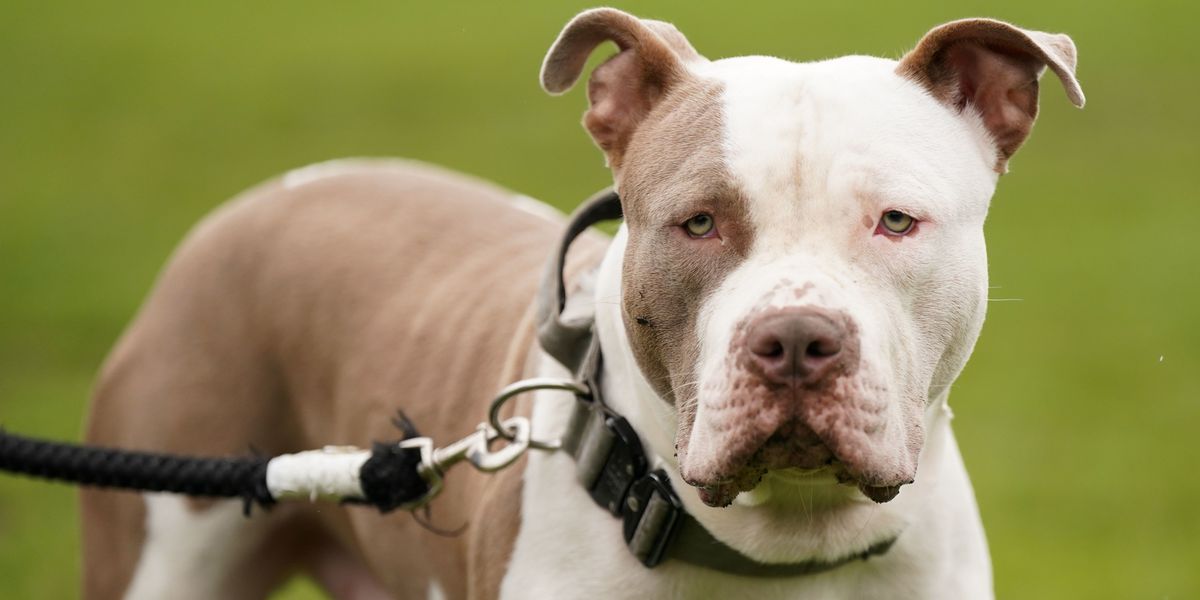Gray wolves are being secretly shipped across the US-Canada border and released into the Colorado mountains.
The Colorado Parks and Wildlife is refusing to reveal where the wolves imported from British Columbia are being set free to protect the predators and the staff responsible for transporting and releasing them.
The operation began on January 10 by flying at least 15 gray wolves from British Columbia into Colorado.
Officials confirmed the wolves arrived at Eagle County airport but they have refused to disclose their final release locations. This is despite previously sharing a video of an earlier December 2023 release.
A petition to delay the reintroductions by ranchers concerned about stock losses has already been dismissed.
Wolves in Colorado are federally protected and cannot be hunted or killed.
Now, residents of three counties - Garfield, Eagle or Pitkin - are on edge.
Garfield County Commissioner Perry Will has voiced growing community concern over the lack of transparency about the release which is part of the state's wolf restoration plan.
Wolves are being shipped in from British Colombia and released into Colorado mountains (a previous release of wolves in December 2023)
A pack of gray wolves was spotted at a US National Park for the first time in a century, officials said. A still shows a wolf from another pack in Northern California
'People are more upset about them being so secretive about it than they are about the wolves being here,' Will told Cowboy State Daily.
'Some are even disgusted,' he added.
The predators could be released in any of three counties, but local officials say they've been left in the dark.
'Due to the complexity of the operation, and to ensure the safety of our staff and the animals, CPW will not be sharing wolf release details while the operation is underway,' Gonzales told Dailymail.com.
Colorado rancher Howard Cooper, who is a member of the Colorado Conservation Alliance, said he struggles to understand why the governor's office and the CPW can't be more transparent about the release program.
Some residents also expressed concerns about proper disease screening given the rapid timeline.
However, the CPW insists the wolves are being thoroughly examined.
'Wolves will be examined and provided treatment for possible diseases and infections at the source site,' the CPW said trying to reassure local.
The agency plans to continue releases for up to five years, aiming to establish 10-15 wolves per year across Colorado's western slope.
Colorado Parks and Wildlife have released five endangered gray wolves onto public land in Grand County as a part of the state's reintroduction plan
Colorado rancher Howard Cooper who is a member of the Colorado Conservation Alliance expressed concerns about proper disease screening given the rapid timeline
Garfield County Commissioner Perry Will voiced growing community concern over the lack of transparency
'We remain committed to working with all parties as we continue to implement the law as passed by the voters,' said CPW Director Jeff Davis.
'We have been working all year in preparation to have more wolves on the landscape with an improved Conflict Minimization Program, the addition of new staff to work alongside producers, strengthened partnerships, and guidelines for producers as it relates to chronic depredation and lethal management considerations.'
Northwest Region Public Information Officer Rachael Gonzales said adding wolves from British Columbia to the existing population in Colorado will increase the likelihood of pairing, breeding and pack formation.
'Established wolf packs defend territories, which will allow CPW to monitor patterns within a territory and will improve the agency's ability to collaborate with producers on active behavior and coexistence strategies to best protect livestock,' Gonzales added.
British Columbia has between 5,300 and 11,600 wolves.
Officials note they are specifically choosing wolves from areas that don't overlap with livestock to avoid introducing predators already involved in livestock conflicts.
CPW Wolf Conservation Program Manager Eric Odell emphasized the benefits of reintroducing the beasts.
'This new source population of gray wolves will provide additional genetic diversity to Colorado's wolf population,' he said in a statement.
Northwest Region Public Information Officer Rachael Gonzales wrote: 'Adding wolves from British Columbia to the existing population in Colorado will increase the likelihood of pairing, breeding and pack formation'
'We've been told that there are places in Eagle County that are suitable for the releases, but we haven't been told anything since,' Eagle County Commissioner Jeanne McQueeney told Cowboy State Daily
He said a future public press conference will provide more detail about the location and number of wolves they are planning to release.
All residents know is that the wolves will be released in select sites across Garfield, Eagle or Pitkin counties.
This is despite a majority of residents in both Garfield and Eagle opposing wolf reintroduction when Colorado passed a law in 2020 by the narrowest of margins - 50.91 percent to 49.09 percent.
'We've been told that there are places in Eagle County that are suitable for the releases, but we haven't been told anything since,' Eagle County Commissioner Jeanne McQueeney told Cowboy State Daily.
There is also concern over Colorado's wolves pushing north toward the Wyoming state line where they can be 'shot on sight.'
Colorado Parks and Wildlife aims to 'restore and manage' a population in the state 'using the best scientific data available'
'If I had a crystal ball, what do I think? I think that sometime within the next four to six weeks, we'll have one cross, or maybe a couple cross over,' Colorado resident John Michael Williams told the Cowboy State Daily.
'And we'll see some of them getting shot.'
The first wolves were released in December 2023 at an undisclosed location in Grand County during an invitation-only event.
They included two juvenile females and two juvenile males, as well as one adult male.
The CPW collected genetic material – tissue and blood samples – before fitting each animal with a GPS satellite collar for tracking.
The wolves were also given vaccines and treated for parasites.
Wolves will travel up to 140 miles from where they are freed, according to the Colorado Wolf Restoration and Management Plan, which is why they were released at least 60 from the state borders of Wyoming, Utah, New Mexico and the sovereign tribal lands in southwestern Colorado.
But these states aren't the only one that can potentially expect wolf sightings.
In November, a small pack of gray wolves were spotted the Lassen Volcanic National Park for the first time in almost 100 years.
The wolves were believed to have been hunted to extinction in the area.
A mother, father and their two pups, the pack was detected by a camera trap just south of the sprawling expanse in Northern California, the US Forest Service said.
'Historic day for Colorado and for the first time ever - we released five wolves, three males and two females, in Grand County today,' US Forest Service said of the rare sighting.
'The wolves were captured in Oregon where our veterinarians and biologists evaluated them, collected genetic material – tissue and blood samples – before fitting each with a GPS collar for tracking. The wolves were given vaccines and then placed in crates and flown to Colorado for their release into the wild.'

 By Daily Mail (U.S.) | Created at 2025-01-18 19:11:22 | Updated at 2025-01-19 00:10:13
5 hours ago
By Daily Mail (U.S.) | Created at 2025-01-18 19:11:22 | Updated at 2025-01-19 00:10:13
5 hours ago

![Lack of moderates among Palestinian Islamo-Arabs [Sodom?] - forced humane Israel into a dangerous hostage deal.](https://news.devevil.com/site/uploads/2024/Apr/14/news2.png)





